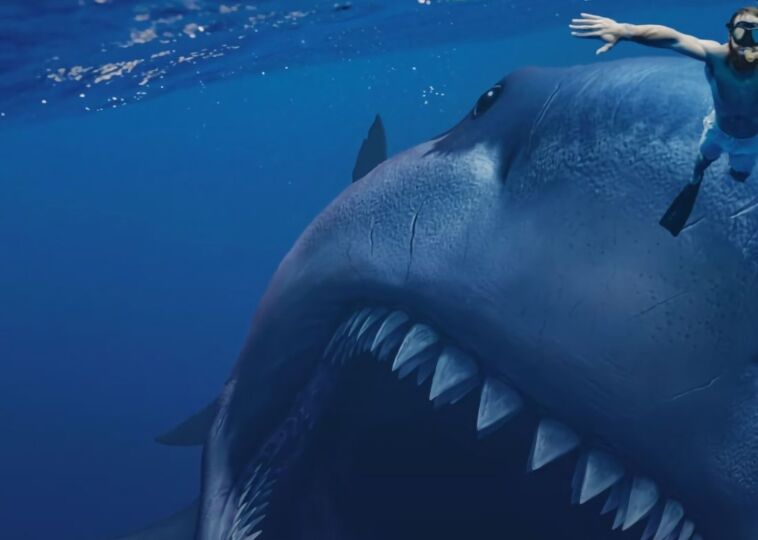Discover the World’s 10 Most Dangerous Sea Creatures

Contents [hide]
The ocean is mysterious and mesmerizing, teeming with life forms ranging from the gentle to the downright deadly. For those brave enough to venture into the depths, the dangers aren’t just about oxygen levels or navigating dark waters; it’s about understanding the formidable creatures lurking beneath.
Some might think the ocean is only about colorful corals and playful dolphins. Still, it’s also home to some of the planet’s most dangerous sea creatures, capable of delivering life-threatening stings, bites, and even fatal attacks. Exploring the ocean’s depths can be one of the most enriching experiences of a lifetime but comes with its share of risks.
By being aware of the most dangerous sea creatures and taking the necessary precautions, we can better enjoy the wonders of the underwater world. After all, the ocean is a realm of beauty and danger, where understanding and respecting its inhabitants can mean the difference between a day of wonder and a brush with peril.
Lionfish

Beneath that stunning exterior lies a dangerous predator armed with venomous spines capable of delivering a painful sting. For humans, a sting from a lionfish can lead to a range of symptoms, from intense pain and nausea to more severe reactions like convulsions, fever, dizziness, and numbness.
While lionfish are not typically aggressive towards humans, they will not hesitate to defend themselves if they feel threatened. For divers and fishermen, this means steering clear of their sharp, venomous spines, which serve as their primary defense mechanism. Lionfish are not naturally aggressive toward humans; their apparent hostility is purely defensive.
When they perceive a threat, they flare out their spines, ready to deliver a nasty sting to any would-be attacker. This defensive behavior is vital for survival, especially in their native Indo-Pacific habitats. However, as they’ve spread beyond their native range, their venomous capabilities have posed a growing concern for humans and marine ecosystems.
Sea Snakes:

Sea snakes are notorious for their highly toxic venom, potent enough to incapacitate or kill their prey with alarming efficiency. The venom of sea snakes contains a mix of neurotoxins and hemotoxins that can cause severe symptoms in humans.
This deceptive nature can make sea snake bites particularly dangerous, as the initial lack of pain might delay the recognition and treatment of the bite. Despite their potent venom, sea snakes generally avoid human contact. The symptoms of a sea snake bite can range from mild to severe and typically manifest within minutes to hours.
As the venom spreads, symptoms can escalate to pain, respiratory collapse, and even coma if not treated promptly. Sea snakes’ venom is a defense mechanism and a hunting tool. Although venom poses a severe health risk for humans, so awareness and caution are essential in sea snake habitats.
Cone Snail

The cone snail is a marvel of the marine world, known for its stunning conical shell and intricate color patterns. With over 600 species of cone snails, each with unique and potentially lethal venom, these creatures are a striking example of how beauty in nature can be deceptive. At first glance, cone snails might seem like harmless sea dwellers.
When a cone snail feels threatened, it extends its radula, a tooth-like structure that functions as a harpoon. Some cone snails’ venom can cause paralysis, respiratory failure, and even death within 5 to 8 hours if not treated promptly. Cone snails are typically found in shallow, tropical reefs where they live among sandy sediments and coral.
These environments provide the perfect camouflage for the cone snails, allowing them to ambush unsuspecting prey with their venomous harpoons. Given the dangerous potential of cone snails, it’s crucial for anyone exploring their habitat to take proper precautions. Wearing gloves when handling objects in areas where cone snails are found can help prevent accidental stings.
Stingrays

Stingrays are often mistaken for harmless, serene creatures gliding gracefully along the ocean floor. Stingrays have a unique defense mechanism: a barbed spine in the middle of their long, tapering tail. This spine is covered by a sheath and is equipped with venom.
While these creatures are typically peaceful and prefer avoiding conflict, they can deliver a severe sting if they feel threatened or someone accidentally steps on them. The stingray’s tail spine can penetrate deep into the skin, injecting venom that causes intense pain.
When a stingray strikes, the barbed spine embeds into the skin, releasing venom that causes an excruciating sensation, often likened to a bee sting but far more intense. If you find yourself on the receiving end of a stingray’s barbed tail, the first step is to remain as calm as possible.
Barracudas

When you think of ocean predators, barracudas might not immediately spring to mind, but these sleek fish are fascinating and formidable in their own right. With their long, cylindrical bodies and rows of razor-sharp teeth, barracudas have an appearance that can give even the most seasoned diver a moment of pause.
However, despite their intimidating looks and fearsome reputation, barracudas are not inherently dangerous to humans. However, barracudas are known for their curiosity, and their quick, sudden movements can sometimes lead to accidental encounters with divers and swimmers. Typically, barracudas are not aggressive towards people. While barracudas can be intimidating, they generally do not directly threaten humans.
The fish’s sharp teeth can cause serious injury if they bite, but such incidents are typically accidental and often involve the barracuda mistaking a human for a fish. Their behavior is more about curiosity than aggression, and most barracudas will quickly retreat if they feel threatened.
Salt Water Crocodile

But lurking beneath the surface of the murky waters, the saltwater crocodile stands out as one of the most dangerous creatures on the planet. Even though saltwater crocodile attacks on humans are rare, they are among the most feared due to their power and aggression.
Saltwater crocodiles, or salties, are the most prominent living reptiles and some of the most efficient predators in the wild. One of the most chilling aspects of the saltwater crocodile is its ability to remain almost invisible in the murky waters where it resides.
While saltwater crocodile attacks on humans are relatively uncommon, the severity of these incidents makes them so alarming. Reports suggest that saltwater crocodiles are responsible for thousands of fatalities annually, a statistic that reflects their potential danger despite the rarity of attacks.
Stonefish

Stonefish are among the most formidable and elusive predators in the ocean. With their remarkable ability to blend seamlessly into their surroundings, these creatures often go unnoticed until it’s too late. Stonefish are ambush predators, relying on patience and lightning-fast strikes to capture their meals.
Despite their passive nature, stonefish can pose significant danger if they feel threatened or are accidentally stepped on. When disturbed, the stonefish raises these spines defensively, and if a person steps on one, the venom is injected through the spines into the wound. Stonefish venom is highly toxic and capable of causing severe physiological damage.
To avoid encounters with these dangerous creatures, it’s essential to be vigilant, especially in shallow, sandy areas where stonefish are likely to be found. Wearing protective footwear while snorkeling or diving can significantly reduce the risk of stepping on a stonefish.
Flower Urchin

The flower urchin, scientifically known as Toxopneustes pileolus, is infamous for its evil nature. Still, it’s the mechanism of its venom delivery that genuinely sets it apart from other sea urchins. Unlike its relatives that might use spines for defense, the flower urchin relies on its pedicellariae, tiny, flower-like structures with a sting.
Once activated, the pedicellariae inject venom through their flower-like structure. The venom of the flower urchin is not just a mild irritant; it’s a potent cocktail that can cause severe reactions in humans. What makes the sting even more dangerous is the flower urchin’s ability to keep delivering venom long after the initial contact.
The pedicellariae have tiny claws that can break off and adhere to the point of contact, continuing to inject venom for hours. For scuba divers and marine enthusiasts, the flower urchin represents a hidden danger lurking in the coral reefs and sandy bottoms. Understanding the flower urchin’s behavior and the risks it poses can help prevent accidental stings.
Blue Ringed Octopus

The blue-ringed octopus stands out for its remarkable yet dangerous beauty among the ocean’s most intricate creatures. Blue-ringed octopuses are nocturnal predators, emerging under darkness to hunt small fish and crustaceans. When night falls, their vibrant blue rings become a vivid warning signal.
These rings are not just for show; they are a bright, glaring alarm to potential predators and unwary divers that danger is near. The color shift from a yellow or cream base to a vivid blue clearly indicates their toxic potential. The true menace of the blue-ringed octopus lies in its venom.
The potency of TTX is such that even a tiny amount can cause severe symptoms, making any encounter with this creature a serious medical emergency. While the blue-ringed octopus can deliver its deadly toxin through a bite, the bite itself is often painless and may go unnoticed until symptoms begin to manifest.
Box Jellyfish

When you think of jellyfish, you might envision a graceful, translucent creature drifting through the water. Enter the box jellyfish, a sea creature that turns this tranquil image on its head with its deadly capabilities. Covered in thousands of tiny, needle-like structures called nematocysts, these jellyfish are armed with potent venom designed to paralyze and immobilize their prey.
The nematocysts embedded in their tentacles inject venom that can cause excruciating pain, paralysis, cardiac arrest, and even death within minutes of a sting. For humans, a sting from a box jellyfish can lead to severe complications and, in some cases, can be fatal if immediate medical treatment isn’t administered.
Surviving a sting from a box jellyfish is not the end of the ordeal. Immediate and thorough medical intervention is crucial to manage the venom’s effects and provide relief from the severe pain associated with the sting. Even with treatment, the aftermath of a box jellyfish sting can be both physically and emotionally taxing.


